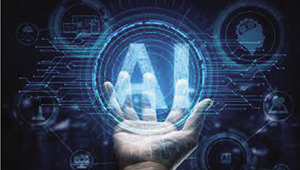 By Al Ruggero
By Al Ruggero
A recent inquiry with ChatGPT produced a bold—if inaccurate—statement:
“Artificial Intelligence (AI) is reshaping how the City of Toronto delivers municipal services, with significant benefits for residents in terms of efficiency, cost savings, and quality of life.”
It sounded promising, even exciting. The problem? It isn’t true—at least, not yet.
Currently, the City of Toronto has not officially adopted AI in any widespread way to deliver public services. That said, the response did raise an important question: What if it did? What would our city look like if artificial intelligence were responsibly and thoughtfully integrated into civic operations?
The possibilities are worth imagining.
One of the most impactful uses of AI could be in traffic and road management. AI-powered traffic signal systems, already in use in cities such as Pittsburgh, Barcelona, Hangzhou, and Singapore, analyze real-time data from vehicles and pedestrians to adjust signal timings dynamically. This approach helps ease congestion, reduce emissions, and shorten commutes. For a city like Toronto—where gridlock is a daily frustration—that kind of solution could be transformative.
AI could also assist with predictive maintenance of roads and infrastructure. By analyzing wear patterns, usage trends, and historical repair data, the city could better plan repairs before emergencies occur, saving both time and taxpayer dollars.
Beyond the roads, municipal services could be more innovative across the board. Machine learning tools could enhance waste collection routes, improve water usage monitoring, and even support public health campaigns by identifying communities at higher risk. This type of optimization would reduce waste, improve service delivery, and more effectively utilize limited resources.
Of course, adopting AI would require workforce adaptation. Jobs in public service would evolve from manual, repetitive tasks to roles focused on oversight, data interpretation, and managing AI tools. Retraining programs would be crucial to ensure staff can make a smooth transition and continue serving with confidence and expertise.
Ultimately, the return on investment could be substantial: faster services, reduced costs, more innovative infrastructure, and a more agile city government.
We’re not there yet—but maybe it’s time to start asking what kind of city we want to build. Because AI isn’t just a futuristic buzzword—it’s a tool. And like any tool, its impact depends entirely on how we choose to use it.














